Gunmen kill five police officers in southeast Iran

Unidentified gunmen attacked two police patrol units near Iranshahr in Iran’s southeastern Sistan-Baluchestan province on Friday, killing five officers, according to state media.

Unidentified gunmen attacked two police patrol units near Iranshahr in Iran’s southeastern Sistan-Baluchestan province on Friday, killing five officers, according to state media.
Police said the attackers opened fire on vehicles stationed on the Khash-Iranshahr road.
The attack is the latest in a surge of violence in the province, which borders Pakistan and Afghanistan and has long been a hotspot for militant activity and drug trafficking.
The Sunni militant group Jaish al-Adl, designated a terrorist organization by both Iran and the United States, has claimed responsibility for several recent assaults, including a July attack on a courthouse in Zahedan that killed nine and clashes in Saravan earlier this month.
Iran’s Revolutionary Guards said on Sunday their forces had killed six militants and destroyed two hideouts in coordinated raids in the province, seizing explosives, detonators and communications gear.
“Two terrorist teams were destroyed,” the Guards said, adding that local residents had helped identify militant safe houses.
The IRGC’s Quds Base, which oversees forces in Sistan-Baluchestan and neighboring Kerman, said the militants had planned sabotage and bombings.
Last Friday, Jaish al-Adl claimed responsibility for an earlier shooting in Iranshahr that killed one police officer and wounded another.
Earlier in August, Iranian police said three militants and one officer were killed in a clash in Saravan, while in late July nine people died in an assault on a courthouse in the provincial capital Zahedan, which the group also claimed.
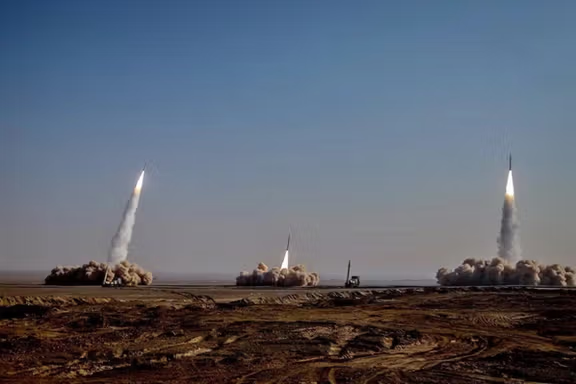
Iran temporarily closed large sections of its western airspace early on Friday to allow military drills, before restoring flights several hours later, local media reported.
Fars News Agency said the restrictions were imposed from midnight until 6 a.m. local time, covering parts of Zanjan, Hamedan, Arak, Yasuj, Iran’s western borders, and airspace over the western Persian Gulf.
Several domestic outlets reported that the exercise was carried out by the Islamic Revolutionary Guard Corps (IRGC) and involved both missile and drone operations across several regions.
The move came as regional media reported heightened security. Al-Hadath television said two planes — one Iraqi and one Iranian — due to depart Baghdad for Tehran were prevented from taking off during the restrictions. No official explanation was given.
Iran has issued separate notices to airmen (NOTAMs) in recent weeks closing parts of eastern provinces, including North, Razavi and South Khorasan, for live-fire drills until the end of summer.
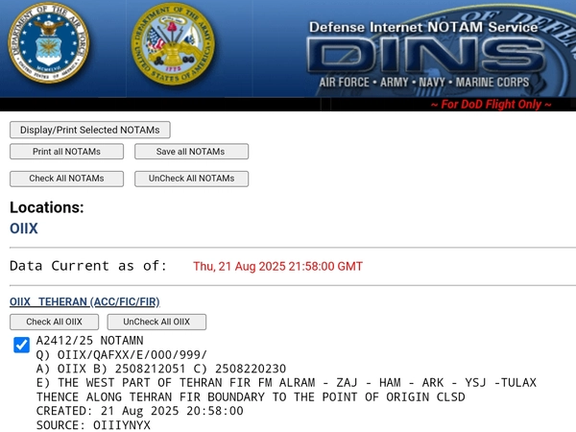
Earlier this week, Iran’s navy test-fired Nasir, Qadir, and Ghader cruise missiles during large-scale drills in the Gulf of Oman and northern Indian Ocean, state media said.
The exercises, called Sustainable Power 1404, involved launches from coastal batteries and warships including the Genaveh missile boat and Sabalan destroyer. Officials said the radar-evading, high-precision missiles struck their targets at sea.
The drills came a month after joint Iran-Russia naval maneuvers in the Caspian Sea -- Casarex 2025.
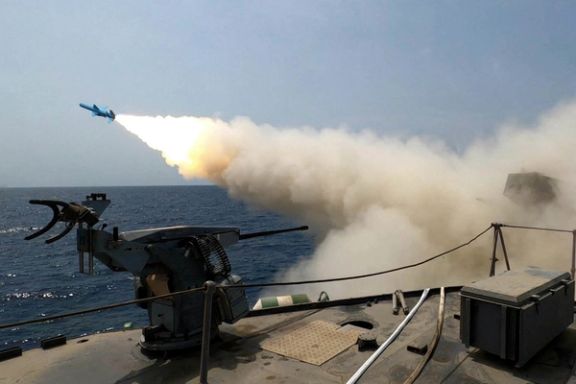
Iran’s navy test-fired a range of cruise missiles during large-scale drills on Thursday, striking surface targets in the Gulf of Oman and northern Indian Ocean, state media reported.
The exercises, dubbed Sustainable Power 1404, featured the simultaneous use of Nasir, Qadir, and Ghader anti-ship cruise missiles launched from coastal batteries and warships, including the Genaveh missile boat and the Sabalan destroyer.
“These missiles, with different ranges, successfully hit their designated targets at sea,” the semi-official Tasnim news agency said. Officials described the systems as radar-evading, high-precision and designed to counter both naval and coastal targets.
The drills took place around a month after the Iran-Russia drill under the name Casarex 2025, which took place in Iran's northern waters -- the Caspian Sea.
Marking National Defense Industry Day, Iran’s Defense Ministry said the country had advanced “from the peak of dependence on foreigners to the heights of self-sufficiency and power” in the missile, weapons and space sectors.
It warned that “any miscalculation in the region will be met with a very strong response from Iran’s powerful armed forces.”
The ministry said the 12-day war in June had demonstrated the effectiveness of Iranian weaponry, adding that Tehran’s defense industry will continue to expand without a moment of hesitation.
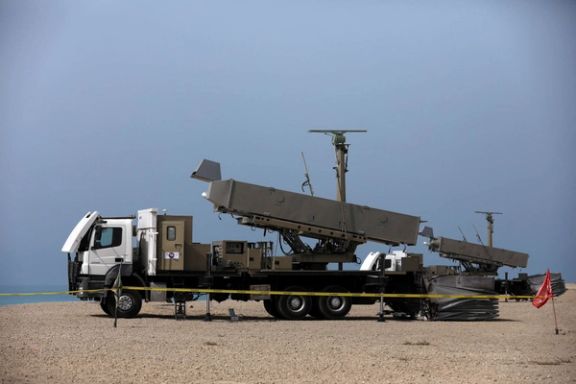
Army Navy vs Guard Navy
Iran maintains two distinct naval forces under separate command structures: the conventional Islamic Republic of Iran Navy -- a force within the traditional army --and the Islamic Revolutionary Guard Corps Navy.
While both are tasked with defending Iranian interests at sea, their missions, capabilities and areas of operation differ, according to a Defense News analysis.
“The IRGC Navy and the Iranian Navy have two separate command structures. While some of their responsibilities overlap, the primary difference is the methods and strategies of operation,” analyst Sina Azodi told Defense News.
He added that the IRGC Navy emphasizes asymmetric operations, relying on fast boats, missile-equipped vessels and hit-and-run tactics, while the traditional Navy deploys larger platforms such as frigates, corvettes and submarines.
According to Mohamed al-Kenany, head of the military studies unit at the Cairo-based Arab Forum for Analyzing Iranian Policies, another key distinction is geography.
Iran’s navy patrols the Gulf of Oman, the Indian Ocean and the Caspian Sea, while the Revolutionary Guard controls the Persian Gulf and the Strait of Hormuz, where it has seized Western vessels and shadowed US warships during past tensions.
Al-Kenany added that the IRGC’s use of naval mines and swarms of small craft makes its anti-access strategy in the Persian Gulf highly effective, while the conventional Navy remains constrained by aging 1970s-era frigates and corvettes and sanctions that block modernization.
Since 1979, the United States has imposed sanctions on Iran that restrict access to advanced military technology, forcing Tehran to rely on indigenous development and adaptations of older systems.
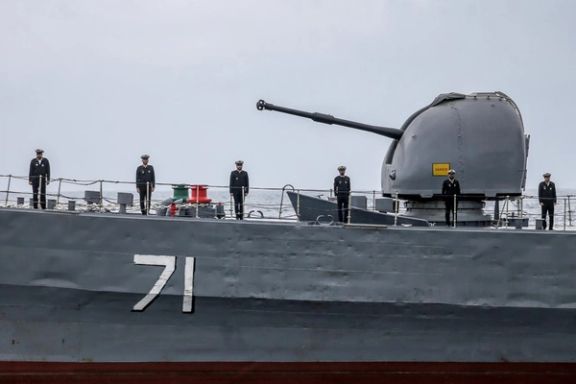
Top commanders call for modernization
Armed Forces Chief of Staff Major General Abdolrahim Mousavi said Iran’s only guarantee of security was to continually upgrade its systems.
“The only way to shield the country from threats is to enhance deterrence and modernize our ground, naval, aerospace, air defense, cyber and electronic warfare capabilities,” he said in a message to Defense Minister Brigadier General Aziz Nasirzadeh.
Nasirzadeh himself told reporters on Wednesday that Iran had developed a new generation of missiles with greater capabilities than those used in the June conflict.
“The missiles we used in the 12-day war were built several years ago. Today we possess missiles with far better capabilities, and if the Zionist enemy embarks on another adventure, we will certainly use them,” he said.
He added that Israel’s missile-defense systems, including the US-made THAAD, Patriot, Arrow and Iron Dome, had proven ineffective. “In the early days, about 40% of our missiles were intercepted, but by the end of the war, 90% were striking their targets,” he said.
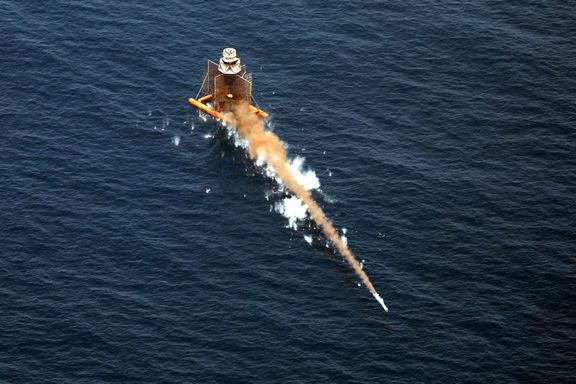
'War is not over'
Earlier in the week, Senior Revolutionary Guards general Yahya Rahim Safavi, now top adviser to Supreme Leader Ali Khamenei, dismissed the June ceasefire as temporary.
“We are not in a ceasefire, we are in a stage of war. No protocol, regulation, or agreement has been written between us and the US or Israel. I think another war may happen, and after that, there may be no more wars,” he said.
Safavi argued that Iran must continue to expand its diplomatic, cyber, missile and drone capabilities. “In the system of nature, the weak are trampled. Therefore, Iran must also become strong,” he said.

Israel vows readiness
Israel’s military chief Lt. Gen. Eyal Zamir said earlier this month the June campaign had been a preemptive strike to eliminate an “emerging existential threat” from Iran.
“If necessary, we will know how to act again with precision, intensity and lethality,” he said.
Israel launched surprise strikes on June 13 that killed senior Iranian commanders and nuclear scientists and damaged nuclear and air defense sites. Iran says 1,062 people were killed, including 786 military personnel and 276 civilians.
Iran retaliated with missile and drone attacks that killed 31 civilians and one off-duty soldier in Israel. The conflict ended with a US-brokered ceasefire on June 24.
Both Tehran and Tel Aviv claimed victory in June, but the rhetoric since then has underscored the fragile truce and the risk of a renewed confrontation in the region.

The extent of damage from recent US strikes on Iran’s Fordow centrifuges remains uncertain, The New York Times reported on Wednesday, with experts questioning President Donald Trump’s assertion that the site was completely obliterated.
US aircraft dropped two cascades of six GBU-57 “bunker buster” bombs on Fordow’s ventilation shafts on June 22.
A Defense Department official told the Times the bombs likely did not penetrate into the underground centrifuge chambers, and that the plan instead relied on shockwaves, pressure, and fire to disable equipment.
The report stressed that only the Pentagon—with access to classified data and advanced computer simulations—can assess the actual scale of destruction.
Experts offered three main scenarios, depending on the shafts’ design, the surrounding geology, and the reinforcement of the concrete.
If the shafts were built in a straight line, the bombs could have penetrated more deeply, transmitting destructive force downward. But if constructed in zig-zag formations, the underground halls may not lie directly beneath the shafts, shielding them from the blasts.
For the attack to fully succeed, shockwaves would have needed to reach depths of 260 to 360 feet underground.
Shafts, rocks, concrete
Geologists cited by the Times said academic studies suggest the presence of ignimbrite, a rock formation that could have absorbed much of the explosive energy. Another expert said volcanic tuff, if present, would have had a similar shock-absorbing effect.
The report also examined Iran’s use of construction materials, noting that if steel fibers were mixed into the concrete, they would have significantly strengthened the bunkers.
That could have reduced the effectiveness of the bombs, though experts agreed the ventilation shafts were natural weak points in Fordow’s design.
Trump vs. experts
Several experts doubted the strikes amounted to a “complete obliteration.”
One mechanical engineer said if the attack was based on precise geological surveys and ventilation mapping, the damage could still be significant. Another noted that if intense fires followed the blasts, Iran might be left with little recoverable equipment.
Trump, who ordered the operation, has continued to describe the attack in absolute terms.
On Tuesday, he said both he and Israeli Prime Minister Benjamin Netanyahu should be considered “war heroes” for their roles.
“We wiped out Iran’s entire nuclear capability overnight,” Trump said. “Iran was four weeks from a nuclear bomb — and we took it out.”

Iran’s communications minister confirmed on Wednesday that widespread disruptions to GPS and internet services were linked to “security considerations” and said raising tariffs for mobile operators had become unavoidable to sustain services.
“Disruptions in frequency bands and GPS signals are due to security concerns and the possible presence of drones,” Sattar Hashemi told reporters after a cabinet meeting, according to state media. “Naturally, this has created problems in providing services to the people. We are negotiating and working step by step to resolve them.”
Hashemi said Iran would not rely on a single technology, when asked about switching to China’s BeiDou navigation system. “We will naturally use all capacities that exist in the world. Sole reliance on one technology is not in our interest,” he said.
He also addressed mounting pressure from mobile operators to increase prices, noting that years of frozen tariffs and rising costs had left them struggling to maintain services.
“The significant increase in operating costs and wages, the higher price of imported equipment, and rising electricity bills have pushed operators to seek tariff reviews. Revising tariffs is essential for maintaining service quality and carrying out development projects,” he said.
The comments follow warnings from Irancell, Iran’s second-largest operator, that without a 70% rise in tariffs the country could face daily internet blackouts of up to three hours.
“If tariffs are not adjusted, operators will not be able to invest, and improving internet quality will be impossible,” CEO Alireza Rafiei said earlier this week, warning that internet outages could soon resemble Iran’s routine power cuts.
Iran has been grappling with deteriorating connectivity since a 12-day war with Israel in June. Internet speeds have slowed, blackouts have multiplied, and GPS interference has continued across major cities, disrupting everything from ride-hailing services and delivery apps to logistics firms and automated calls to prayer.
Ordinary Iranians say the disruptions have upended daily routines. “Even ordering food has become a pain,” a Tehran resident told Iran International. “Drivers can’t find you or show up at the wrong place. By the time it gets to you, it’s cold or your lunch break is over.”
Officials have defended the disruptions as necessary for national defense, arguing GPS jamming can prevent drones and guided missiles from hitting their targets.
“Some of the disruptions to the GPS system originate from within the country for military and security purposes,” Deputy Minister Ehsan Chitsaz said last month, adding Iran was exploring BeiDou as an alternative.
A report by Tehran’s E-Commerce Association earlier in the month ranked Iran 97th out of 100 countries for connectivity, calling its internet “unreliable, restricted and slow.” The group said more than 10 million online businesses had been damaged by systemic disruption.
Hashemi acknowledged the crisis had hurt businesses but insisted raising tariffs and diversifying technology were the only viable paths forward. “We must preserve the ability of operators to develop networks,” he said. “That requires revising tariffs and using every global capacity available.”
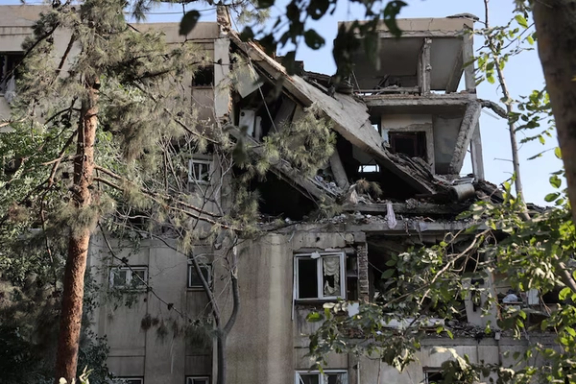
US President Donald Trump said on Tuesday that both he and Israeli Prime Minister Benjamin Netanyahu should be considered “war heroes” for their roles in the attacks on Iran that he said destroyed its nuclear program.
“Nobody cares, but I am too. I sent those planes,” Trump told radio host Mark Levin.
Talks with Tehran under the Trump administration began with a 60-day ultimatum. On the 61st day, June 13, Israel opened a military campaign. Nine days later, US bombers hit three Iranian nuclear sites, which Trump has repeatedly said “obliterated” the country’s program.
“We wiped out Iran’s entire nuclear capability overnight, which they’d have used against Israel in two seconds if they’d had the chance—but we took it out. Iran was four weeks from a nuclear bomb,” Trump said.
Trump also described hosting the pilots behind the Iran strike. “I sent those planes. You know, 22 years. The pilots came, I rewarded them, I brought them all into the Oval Office, the people having to do with that operation, which was so perfect.”
During the intense 12-day conflict in mid-June 2025, Israel’s airstrikes on Iran resulted in over 1,000 Iranian deaths, while Iran’s retaliatory missiles and drones killed 31 Israelis. The conflict also claimed the lives of over 30 senior Iranian commanders and 11 nuclear scientists.